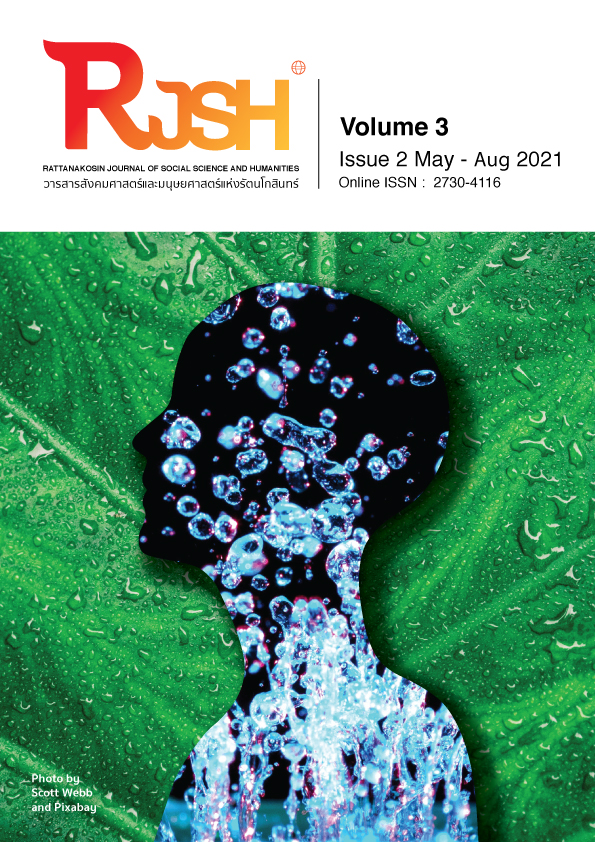Innovation Development Pattern of Social Innovation in Architecture Field in Thailand
Main Article Content
Abstract
This study examines the development process of social innovation in the architecture field in Thailand. The question of this study is “How many steps are there in innovation development pattern of social innovation in the architecture field in Thailand, since the beginning of idea until completely built?”. The research process starts from the selection of 6 case studies that are located in urban, suburban and rural contexts of Thailand by using the Snowball Sampling Technique. The selection criteria for the innovations are as follows: 1) new creation, 2) built with a community participation process, 3) completed and implemented and 4) beneficial to the community.
The research results identified the commonalities among development processes of social innovation in the architecture field, which could be summarized into 4 steps: 1) Idea, 2) Expand, 3) Development and 4) Dissemination
Article Details
The content within the published articles, including images and tables, is copyrighted by Rajamangala University of Technology Rattanakosin. Any use of the article's content, text, ideas, images, or tables for commercial purposes in various formats requires permission from the journal's editorial board.
Rajamangala University of Technology Rattanakosin permits the use and dissemination of article files under the condition that proper attribution to the journal is provided and the content is not used for commercial purposes.
The opinions and views expressed in the articles are solely those of the respective authors and are not associated with Rajamangala University of Technology Rattanakosin or other faculty members in the university. The authors bear full responsibility for the content of their articles, including any errors, and are responsible for the content and editorial review. The editorial board is not responsible for the content or views expressed in the articles.
References
ประเวศ วะสี. (2545). นวัตกรรมสังคม: ทางเลือกเพื่อประเทศไทยรอด. กรุงเทพฯ: โรงพิมพ์ดี.
ศุภวุฒิ สายเชื้อ. (2558). นวัตกรรมกับความเจริญทางเศรษฐกิจ. (ออนไลน์). http://www. bangkokbiznews.com/blog/detail/629139, 29 มิถุนายน 2560.
สมนึก เอื้อจิระพงษ์พันธ์, พักตร์ผจง วัฒนสินธุ์, อัจฉรา จันทร์ฉาย และ ประกอบ คุปรัตน์. (2553). นวัตกรรม: ความหมาย ประเภท และความสำคัญต่อการเป็นผู้ประกอบการ. กรุงเทพฯ: คณะพาณิชยศาสตร์และการบัญชี มหาวิทยาลัยธรรมศาสตร์.
สำนักงานนวัตกรรมแห่งชาติ. (2549). สุดยอดนวัตกรรมไทย. กรุงเทพฯ: สำนักงานนวัตกรรมแห่งชาติ กระทรวงวิทยาศาสตร์และเทคโนโลยี.
อลงกรณ์ คูตระกูล. (2553). นวัตกรรมสังคม: กรณีศึกษาโครงการของท้องถิ่นในเขตภาคเหนือของประเทศไทย. กรุงเทพฯ: คณะรัฐประศาสนศาสตร์ สถาบันบัณฑิตพัฒนบริหารศาสตร์.
Adams, D., & Hess, M., (2010). Social innovation and why it has policy significance. Econ. Labour Relat. Rev. 21.
Alakeson, V., Aldrich, T., Goodman, J. Jorgensen, B., & Miller, P. (2003). Social Responsibility in the Information Society. (Online). https://www.forum forthefuture.org/sites/default/files/project/downloads/social-responsibility-information-society.pdf.
Booz, E., Allen, J., & Hamilton, C. (1982). New Product Management for the 1980s. New York, USA: Booz, Allen and Hamilton.
Chan, K., Oerlemans, L., & Pretorius, M. (2011). Innovation outcomes of South African new technology-based firms: a contribution to the debate on the performance of science park firms. South African Journal of Economic and Management Sciences. 14(4).
Chandra, M., and Neelankavil, J. (2008). Product development and innovation for developing countries: Potential and challenges. Journal of Management Development. 27(10).
Chesbrough, H. (2003). The logic of open innovation: Managing intellectual property. California Management Review. 45.
Clark, B., & Fujimoto, T. (1991). Product Development Performance. Boston, USA: Harvard Business School Press.
Cooper, R.G. (1990). Stage-Gate Systems: A New Tool for Managing New Products. Business Horizons. 33(3).
Cooper, R.G., & Edgett, S.J. (1999). Product Development for the Service Sector. Cambridge, USA: Perseus Books.
Rogers, E.M. (1983). Diffusion of innovations. Third edition. New York. Free Press.
Van der Have, R.P., & Rubalcaba, L. (2016). Social innovation research: An emerging area of innovation studies?. Research Policy, 45(9), 1923-1935.


